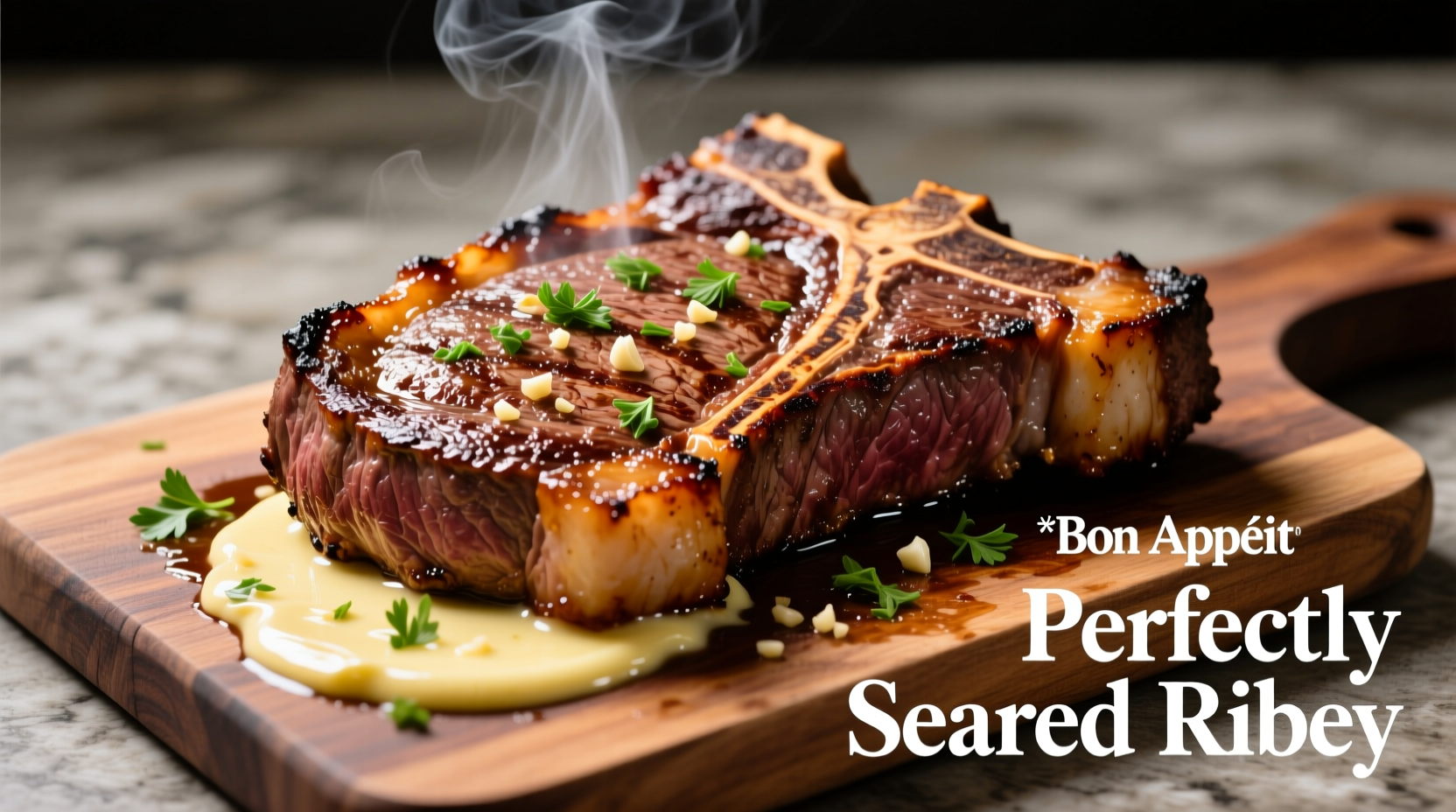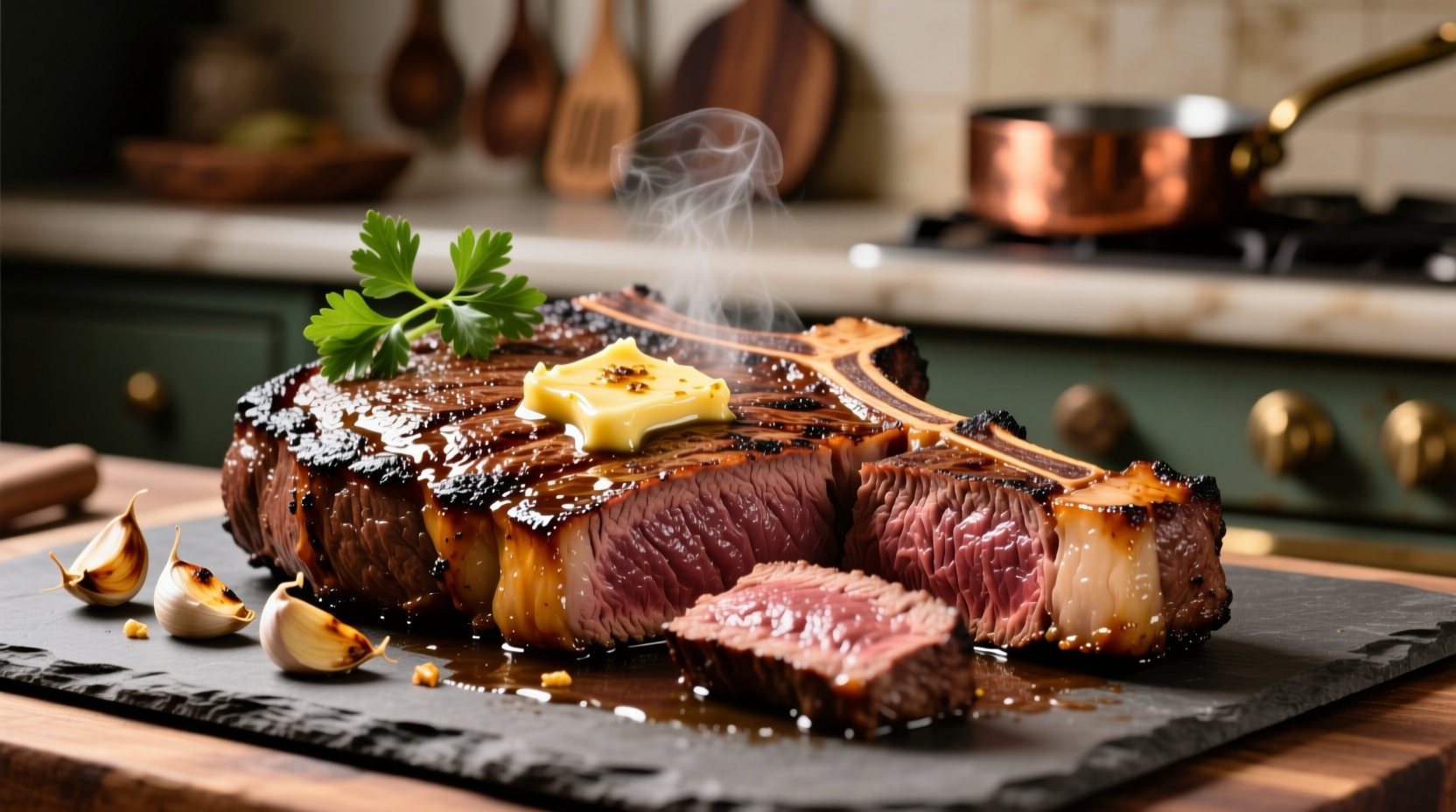The Ultimate Guide to Perfect Steak with Garlic Butter
Nothing elevates a simple steak like a rich garlic butter compound that melts into every crevice as it rests. This isn't just about adding fat—it's about creating flavor layers that transform quality beef into an extraordinary meal. In this guide, you'll master the precise timing, temperature control, and butter composition that separates good steak from exceptional steak.
Why This Method Works: The Science Behind Success
Garlic butter isn't merely a topping—it's a flavor delivery system. When properly prepared, the butter's fat carries garlic's volatile compounds deep into the steak's surface while the resting phase allows these flavors to penetrate. The key lies in timing: applying the butter during resting prevents burning while maximizing flavor absorption.
Selecting Your Foundation: Steak and Ingredients
Steak selection matters most: Ribeye, strip, or filet mignon work best due to their marbling and thickness (1.5-2 inches). Thinner cuts overcook before developing proper crust. According to the USDA Meat Grading Standards, USDA Prime grade offers optimal marbling for this preparation, though Choice grade works well with proper technique.
| Steak Cut | Ideal Thickness | Flavor Profile | Best Cooking Method |
|---|---|---|---|
| Ribeye | 1.5-2 inches | Rich, beefy, marbled | Cast iron skillet |
| Filet Mignon | 2 inches | Mild, tender | Sous vide + sear |
| New York Strip | 1.5 inches | Robust, balanced | Grill or skillet |
Garlic Butter Composition: Precision Matters
Most home cooks make these critical errors:
- Using raw garlic (burns easily, becomes bitter)
- Adding butter too early (causes flare-ups)
- Overloading with herbs (masks beef flavor)
The professional solution: infused compound butter made with:
- 8 tablespoons unsalted butter, softened
- 3 garlic cloves, minced fine and sautéed in 1 tsp oil until golden
- 1 tbsp fresh parsley, finely chopped
- 1/2 tsp flaky sea salt
- 1/4 tsp freshly cracked black pepper
- 1 tsp lemon zest (brightens without acidity)
According to culinary research from the Culinary Institute of America, sautéing garlic before incorporating into butter prevents bitterness while maximizing flavor extraction—raw garlic contains allicin that breaks down unpleasantly at high heat.
Step-by-Step Cooking Process
Preparation Phase (24 Hours Before)
Dry brine for superior crust: Pat steak dry, then apply 1/2 tsp kosher salt per pound directly to surface. Refrigerate uncovered for 12-24 hours. This draws out surface moisture while allowing salt to penetrate, creating the perfect conditions for Maillard reaction.
Cooking Phase (Critical Timing)
- Bring steak to room temperature (45-60 minutes)
- Heat cast iron skillet over medium-high until smoking (500°F+)
- Sear 2-3 minutes per side until deep brown crust forms
- Rotate 90 degrees halfway through each side for cross-hatch marks
- Flip when steak releases easily from pan (don't force it)
- Add 1 tbsp butter and herbs to pan during last minute of cooking
- Remove when 5-7°F below target temperature (carryover cooking will finish it)

Resting & Finishing (The Game-Changer)
This is where most fail: rest steak 8-10 minutes before applying garlic butter. As the meat rests:
- Place steak on warm plate (not cutting board)
- Form garlic butter into log on parchment paper
- Slice 2-3 tablespoons onto hot steak
- Let butter melt naturally—don't spread it
The American Meat Science Association confirms that resting allows juices to redistribute while the residual heat (120-130°F) perfectly melts the butter without cooking the garlic further. This technique creates flavor integration rather than surface coating.
Avoid These 3 Common Mistakes
Mistake #1: Adding Butter Too Early
Putting butter in the pan during searing causes flare-ups that char the exterior while undercooking the interior. Solution: Add butter only during the final minute of cooking for basting, then finish with compound butter after resting.
Mistake #2: Using Cold Butter
Cold butter solidifies on contact, creating uneven coverage. Always use room-temperature compound butter formed into a log for controlled application.
Mistake #3: Overcomplicating the Butter
More than 3-4 flavor components overwhelms the steak. Classic steak au poivre uses only pepper and cognac for good reason—simplicity highlights quality ingredients.
Serving & Pairing Perfection
Serve immediately after butter application when:
- Internal temperature reaches 130-135°F (medium-rare)
- Butter has melted into a glossy sheen
- Steak surface shows deep mahogany color
Pair with simple sides that won't compete:
- Roasted fingerling potatoes with rosemary
- Blanched asparagus with lemon zest
- Arugula salad with shaved Parmesan
Storage & Reheating Without Sacrificing Quality
If you must store leftovers:
- Refrigerate within 2 hours in airtight container
- Consume within 3 days for best quality
- Reheat in 250°F oven until internal reaches 110°F
- Finish with quick sear for renewed crust
Never microwave—this destroys texture. The USDA Food Safety and Inspection Service recommends reheating cooked meat to 165°F for safety, but for premium steaks, bringing to 110°F then searing preserves texture while ensuring safety through the initial proper cooking.











 浙公网安备
33010002000092号
浙公网安备
33010002000092号 浙B2-20120091-4
浙B2-20120091-4